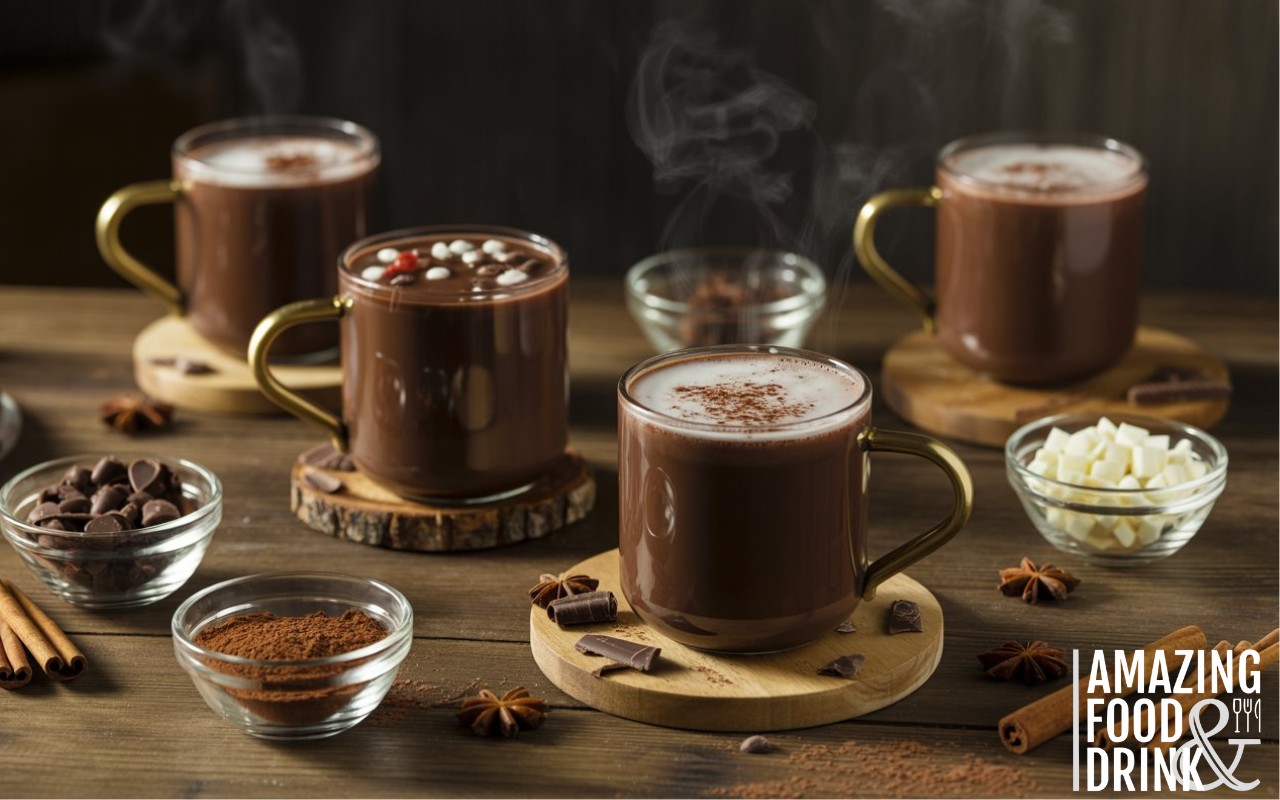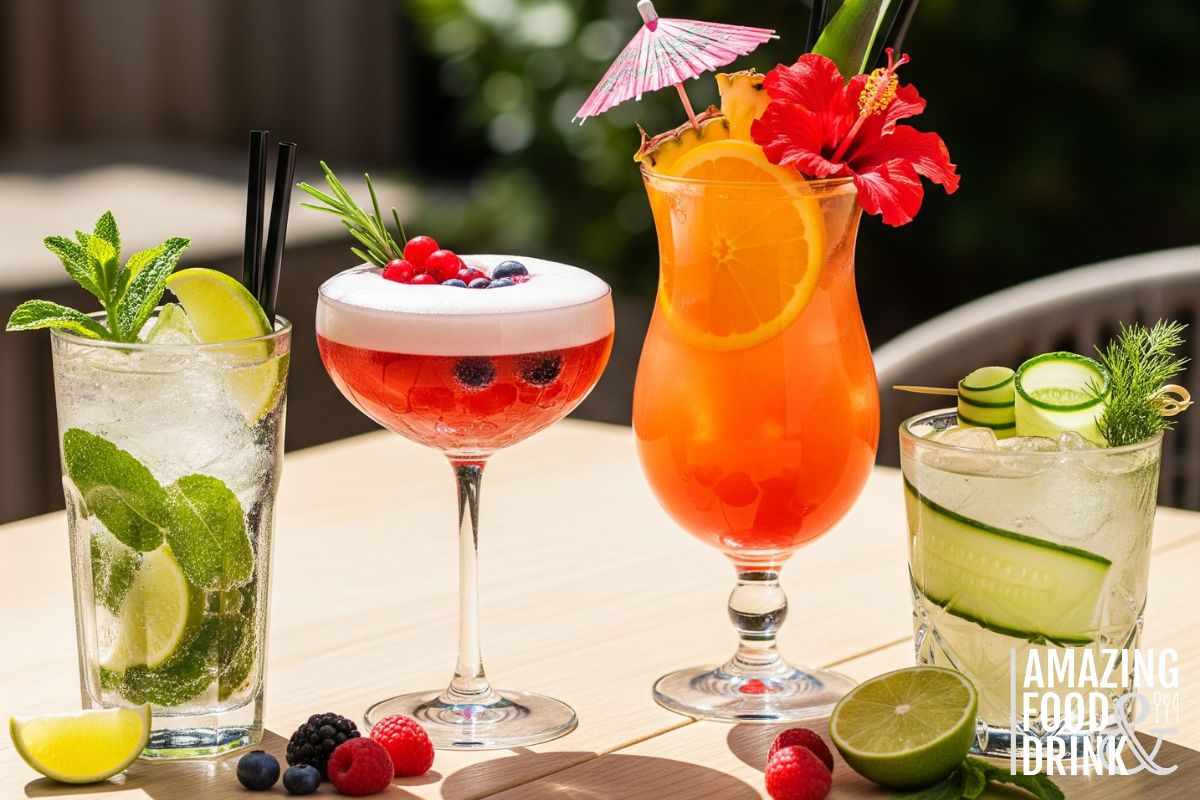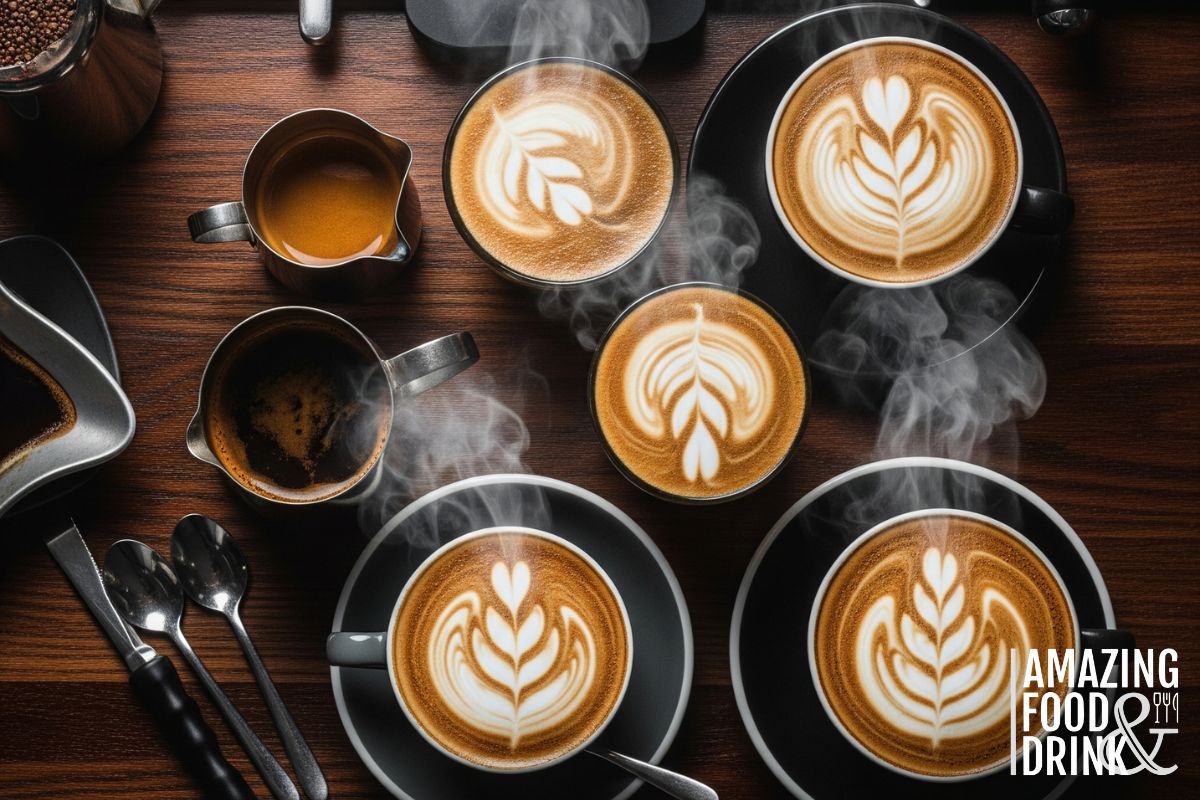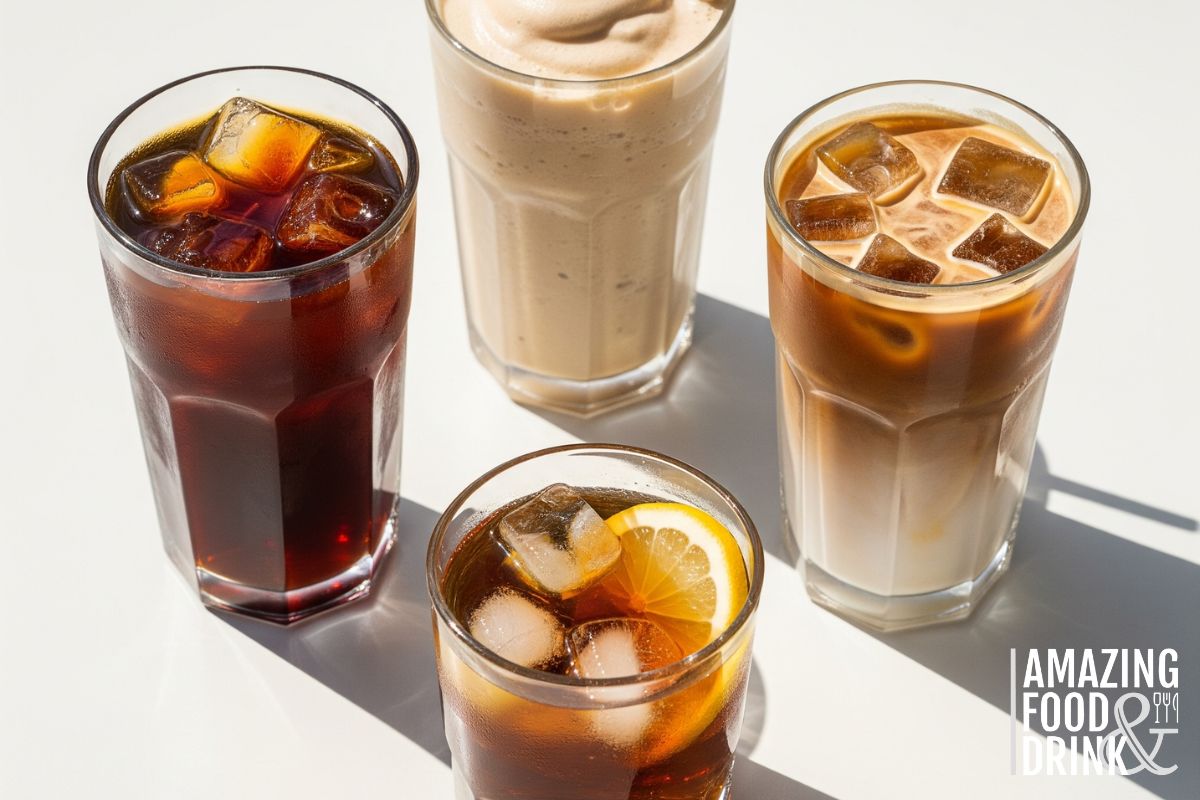Winter evenings call for something extraordinary, and these hot cocoa bar ideas transform an ordinary drink into a memorable experience. Gone are the days of plain instant packets—discover how professional techniques and creative toppings can turn your kitchen into a gourmet cocoa haven.
From my decade of recipe development, I’ve learned that exceptional hot cocoa starts with understanding the fundamentals whilst embracing bold flavour combinations. These ten methods combine traditional techniques with innovative twists that will revolutionise your approach to this beloved winter warmer.
Table of Contents
- The Perfect Hot Cocoa Bar
- Creative Hot Cocoa Toppings
- Best Spices
- 10 Gourmet Hot Cocoa Recipes
- Professional Techniques
- Ultimate Customisation
- Presentation Ideas
How to Create the Perfect Hot Cocoa Bar

Setting up a hot cocoa bar elevates any gathering into something memorable. Professional caterers use this approach because it combines convenience with customisation, allowing each guest to craft their perfect cup.
Essential Hot Cocoa Bar Ideas
Your foundation requires three distinct cocoa bases: classic dark, creamy white, and spiced varieties. I recommend preparing these in slow cookers or thermal carafes to maintain optimal serving temperature throughout your event.
Equipment Essentials:
- Three warming vessels for different chocolate bases
- Ladles or pumps for easy dispensing
- Small spoons for toppings
- Variety of mug sizes
- Napkins and stirring implements
Milk Options Station: Offer whole milk, semi-skimmed, oat milk, and double cream. Each brings unique texture and flavour profiles that complement different chocolate styles.
Creative Hot Cocoa Toppings That Transform Every Sip

Toppings distinguish amateur from professional presentations. These carefully selected additions provide textural contrast whilst enhancing flavour complexity.
Sweet Additions
- Mini marshmallows and flavoured varieties
- Whipped double cream with vanilla extract
- Dark chocolate shavings using a microplane
- Crushed digestives or shortbread biscuits
- Salted caramel drizzle
Spiced Enhancements
- Cinnamon sticks for stirring and flavour infusion
- Freshly grated nutmeg
- Cardamom pods (lightly crushed)
- Orange zest ribbons
- Chilli flakes for adventurous palates
Best Spices for Hot Cocoa: Professional Flavouring Techniques

Understanding spice integration separates exceptional hot cocoa from merely good versions. Each spice requires specific handling techniques to maximise flavour extraction whilst avoiding overpowering the cocoa’s natural complexity.
Traditional British Warming Spices
Cinnamon works best when added during heating rather than as a garnish. Ceylon cinnamon provides gentler sweetness compared to cassia’s intensity. Toast whole sticks in your saucepan before adding liquid for deeper flavour development.
Nutmeg should always be freshly grated. Pre-ground nutmeg loses essential oils rapidly. Three or four grates per serving provide sufficient warmth without overwhelming delicate chocolate notes.
Cardamom requires gentle crushing to release aromatic compounds. Remove pods before serving, as whole cardamom can create bitter notes if over-steeped.
International Flavour Profiles
Mexican traditions incorporate chilli powder and cayenne pepper for subtle heat that enhances rather than competes with cocoa. Start with tiny amounts—1/8 teaspoon serves four mugs adequately.
Indian-inspired versions benefit from ginger and turmeric, creating golden hot cocoa with anti-inflammatory properties.
10 Gourmet Hot Cocoa Recipes
These carefully crafted recipes progress from foundational techniques to adventurous flavour combinations, each designed to showcase different aspects of hot cocoa artistry. Master the classic version first, as its principles underpin every variation that follows.
1. Classic British Hot Cocoa Recipe

This foundational recipe uses proper British techniques developed through generations of cocoa craftsmanship. Quality ingredients make a substantial difference—choose sustainable chocolate with a minimum of 60% cacao content for optimal flavour balance.
Ingredients:
- 75g dark chocolate (70% cacao), finely chopped
- 500ml whole milk
- 2 tablespoons caster sugar
- Pinch of sea salt
- 1 teaspoon vanilla extract
- Double cream for serving
Method: Heat milk gently in heavy-bottomed saucepan until steaming. Whisk in chopped chocolate until completely melted and smooth. Add sugar and salt, adjusting sweetness to preference. Remove from heat, stir in vanilla. Serve immediately, topped with lightly whipped double cream.
Professional Tip: Tempering prevents cocoa from seizing. Add hot milk gradually to the chocolate rather than dumping the chocolate into the boiling milk.
2. Spiced Mexican Hot Cocoa

Authentic Mexican hot cocoa balances heat with sweetness, creating complexity that develops across each sip. This recipe honours traditional preparation whilst accommodating British palates.
Ingredients:
- 100g Mexican chocolate or dark chocolate plus spices
- 400ml whole milk
- 2 tablespoons soft brown sugar
- 1 cinnamon stick
- 1/4 teaspoon ground cinnamon
- 1/8 teaspoon chilli powder
- Pinch of cayenne pepper
- 100ml water
Method: Combine water, chocolate, sugar, and all spices in a saucepan. Simmer whilst whisking until the chocolate melts completely. Gradually add milk, maintaining gentle heat. Simmer ten minutes, stirring occasionally. Strain through a fine sieve before serving.
3. Festive Peppermint Hot Chocolate

December entertaining demands drinks that capture seasonal magic. This peppermint variation provides a refreshing contrast to rich chocolate whilst maintaining the warming properties essential for British winters.
Ingredients:
- 400ml whole milk
- 75ml double cream
- 2 tablespoons caster sugar
- 85g semi-sweet chocolate, chopped
- 1/2 teaspoon vanilla extract
- 1/4 teaspoon peppermint extract
- Crushed candy canes for garnish
Method: Warm milk and cream with sugar until sugar dissolves. Add chocolate, whisking until smooth. Remove from heat, stir in extracts. Adjust peppermint intensity gradually—flavour intensifies as mixture cools. Garnish with whipped cream and crushed candy canes.
4. Salted Caramel Hot Chocolate

Salted caramel transforms ordinary hot chocolate into restaurant-quality indulgence. The salt amplifies chocolate’s natural flavours whilst caramel adds luxurious sweetness and complexity.
Ingredients:
- 400ml whole milk
- 50g dark chocolate, chopped
- 3 tablespoons homemade caramel sauce
- 1/4 teaspoon flaky sea salt
- 2 tablespoons caster sugar
- Whipped cream and extra caramel for serving
Method: Heat milk with sugar until steaming. Whisk in chocolate until melted. Stir in two tablespoons caramel sauce and half the salt. Pour into mugs, top with whipped cream, drizzle remaining caramel, and finish with salt flakes.
5. White Chocolate & Raspberry Hot Chocolate

White chocolate’s sweetness requires careful balancing with tart elements. Raspberries provide necessary acidity whilst contributing beautiful colour and fresh flavour notes.
Ingredients:
- 400ml whole milk
- 100g quality white chocolate, chopped
- 2 tablespoons raspberry syrup or purée
- 1 tablespoon caster sugar
- 1/2 teaspoon vanilla extract
- Fresh raspberries and white chocolate curls for garnish
Method: Heat milk until steaming. Remove from heat, add white chocolate, whisking until completely smooth. Stir in raspberry syrup, sugar, and vanilla. Strain if using fresh purée. Serve topped with fresh berries and chocolate curls.
6. Autumn Pumpkin Spice Hot Chocolate

Autumn flavours extend beyond coffee shop trends when properly executed. This recipe balances pumpkin’s earthiness with warming spices and chocolate’s richness.
Ingredients:
- 400ml whole milk
- 75g milk chocolate, chopped
- 3 tablespoons pumpkin purée
- 2 tablespoons soft brown sugar
- 1/2 teaspoon pumpkin pie spice
- 1/4 teaspoon ground cinnamon
- Pinch of nutmeg and salt
Method: Whisk milk with pumpkin purée until smooth. Heat whilst stirring until steaming. Add chocolate, sugar, and spices, whisking until chocolate melts completely. Simmer gently for five minutes, allowing flavours to develop. Strain before serving for a smoother texture.
7. Coffee Mocha Hot Chocolate

Coffee and chocolate create a natural partnership when proportions remain balanced. This mocha version satisfies both caffeine cravings and chocolate desires whilst maintaining the distinct character of each element.
Ingredients:
- 400ml whole milk
- 75g dark chocolate (60% cacao)
- 60ml strong espresso or 2 tablespoons instant coffee
- 2 tablespoons caster sugar
- 1/2 teaspoon vanilla extract
- Cocoa powder for dusting
Method: Heat milk until steaming. Whisk in chocolate until melted. Stir in coffee and sugar, adjusting sweetness as needed. Add vanilla extract. Pour into mugs, dust with cocoa powder through a fine sieve.
8. Peanut Butter Hot Chocolate

This rich combination combines American-inspired comfort with British sensibilities. Quality peanut butter creates a luxurious texture while complementing the intensity of the chocolate.
Ingredients:
- 400ml whole milk
- 50g milk chocolate, chopped
- 3 tablespoons smooth peanut butter
- 2 tablespoons caster sugar
- 1/2 teaspoon vanilla extract
- Chopped roasted peanuts for garnish
Method: Heat milk until steaming. Whisk in chocolate until melted, then gradually incorporate peanut butter until completely smooth. Add sugar and vanilla. Serve topped with chopped peanuts and extra peanut butter drizzle if desired.
9. Matcha White Hot Chocolate

East meets West in this sophisticated variation, combining matcha’s earthiness with white chocolate’s sweetness. This healthy option provides antioxidants whilst satisfying chocolate cravings.
Ingredients:
- 400ml whole milk (or oat milk)
- 75g white chocolate, chopped
- 1 teaspoon premium matcha powder
- 1 tablespoon honey or maple syrup
- Extra matcha for dusting
Method: Whisk matcha with a small amount of warm water until smooth and frothy. Heat milk until steaming, whisk in white chocolate until melted. Gradually incorporate matcha mixture, whisking constantly to prevent lumps. Sweeten with honey, adjusting to taste. Dust with extra matcha before serving.
10. Hot Chocolate Bombs

Interactive presentation creates memorable experiences perfect for entertaining or gifting. These chocolate spheres conceal surprises that dramatically unveil when hot milk makes contact.
Ingredients for Shells:
- 350g tempered chocolate (milk, dark, or white)
- Silicone sphere moulds
Filling Options:
- Hot chocolate powder
- Mini marshmallows
- Chocolate chips
- Crushed biscuits
- Flavoured syrups
Method: Temper the chocolate properly to ensure a glossy finish and proper setting. Brush a thin layer into moulds, allow to set, repeat for thickness. Fill half-spheres with desired ingredients. Warm plate gently, press sphere edges against warm surface to melt slightly, join halves together. Store in a cool, dry place up to one week.
How to Make Hot Chocolate Taste Better: Professional Techniques

Temperature control determines success more than any single ingredient. Maintain milk below the boiling point—scalded milk develops unpleasant flavours that overpower delicate chocolate notes. Optimal serving temperature ranges between 65-70°C.
Texture Enhancement Methods:
- Add a tablespoon of double cream for richness
- Incorporate a small amount of cornflour for body
- Whisk vigorously during preparation for natural froth
- Use an immersion blender for café-style foam
Flavour Balancing: Salt amplifies chocolate’s natural complexity—add a tiny pinch even to sweet varieties. Vanilla extract rounds harsh edges whilst maintaining chocolate prominence. Quality matters significantly—use real vanilla extract rather than artificial alternatives.
Things to Add to Hot Chocolate for Ultimate Customisation

Personalisation transforms standard recipes into signature creations. These additions allow endless experimentation whilst maintaining chocolate as the starring element.
Liquid Enhancements
- Flavoured syrups: vanilla, hazelnut, caramel
- Extracts: almond, orange, mint, coconut
- Alternative milks: oat, almond, coconut cream
Textural Elements
- Toasted marshmallows for smoky sweetness
- Crushed amaretti or ginger nuts
- Candied orange peel
- Toasted coconut flakes
- Sea salt flakes for a gourmet finish
International Inspirations
Draw from global traditions to create unique flavour profiles. Italian gianduja adds hazelnut complexity. French lavender provides floral sophistication. Turkish delight contributes rose essence and a chewy texture.
Hot Chocolate Presentation Ideas for Instagram-Worthy Serves

Visual appeal increases enjoyment before the first sip. Professional food styling techniques elevate home presentations into photograph-worthy creations.
- Mug Selection: Choose vessels that complement drink colour and style. Clear glass showcases layered drinks whilst ceramic provides insulation. Oversized mugs accommodate generous toppings whilst maintaining proper proportions.
- Garnishing Techniques: Layer toppings for height and visual interest. Drizzle sauces in spirals or geometric patterns. Use cocoa powder stencils for professional finishing touches. Fresh elements like mint sprigs or orange twists add colour contrast.
Frequently Asked Questions
What makes hot chocolate creamy and smooth?
Temperature control and gradual incorporation prevent chocolate from seizing. Use chopped chocolate rather than chips—chips contain stabilisers that affect melting properties. Whisk constantly during heating to create an emulsion between milk and chocolate.
How do you thicken hot chocolate naturally?
Cornflour mixed with small amount of cold milk creates natural thickening without affecting flavour. Alternatively, reduce liquid slightly through gentle simmering, concentrating flavours whilst increasing viscosity.
Can you make hot chocolate ahead for entertaining?
Prepare base mixture without final milk addition up to 24 hours ahead. Store refrigerated, reheat gently whilst gradually adding remaining milk. This prevents skin formation whilst maintaining optimal texture.
What chocolate percentage works best?
60-70% cacao provides an ideal balance between intensity and sweetness for most palates. Higher percentages require additional sweetening, whilst lower percentages may taste overly sweet when combined with milk.
How do you fix grainy hot chocolate?
Strain through a fine sieve to remove any undissolved particles. If the chocolate seizes during preparation, gradually whisk in warm water or milk to restore smooth consistency. Prevention through proper temperature control remains more effective than correction.
Seasonal Hot Chocolate Bar Ideas Throughout the Year

Adapt your hot chocolate experience to reflect seasonal ingredients and celebrations. Spring versions incorporate floral elements like elderflower or rose. Summer lightens the experience with iced variations and fresh berry additions.
Autumn embraces spice blends and harvest flavours—cinnamon, nutmeg, maple, and apple create warming combinations. Winter traditions call for peppermint, orange, and festive presentations that comfort during Britain’s coldest months.
Christmas Hot Chocolate Bar Essentials:
- Multiple chocolate bases, including white chocolate
- Festive toppings: candy canes, shortbread crumbs, mince pie spices
- Warming additions: mulled wine spices, brandy butter flavouring
- Traditional garnishes: orange zest, cinnamon sticks
Storage and Make-Ahead Tips for Hot Chocolate Preparations

Proper storage maintains quality whilst enabling efficient entertaining preparation. Most chocolate bases store refrigerated up to three days, though fresh preparation provides superior flavour and texture.
- Freezing Guidelines: Chocolate bomb shells freeze successfully for up to three months when properly wrapped. Liquid preparations don’t freeze well due to milk proteins separating upon thawing.
- Reheating Best Practices: Gentle warming prevents chocolate from separating or developing a grainy texture. Use low heat with frequent stirring, adding small amounts of fresh milk if the mixture appears too thick.
Conclusion: Creating Your Perfect Hot Chocolate Experience
These techniques transform simple winter warmers into memorable experiences that rival professional cafés. Quality ingredients, proper technique, and creative presentation combine to create drinks worthy of special occasions whilst remaining accessible for everyday indulgence.
Remember that excellent hot chocolate begins with understanding fundamental principles—temperature control, ingredient quality, and balanced flavours. Once these foundations are mastered, creativity becomes the only limitation in developing your signature variations.
Experiment with these recipes as starting points, adjusting spice levels, sweetness, and presentation to match personal preferences. Share your creations at gatherings, creating new traditions that celebrate both comfort and creativity during Britain’s coldest seasons.



